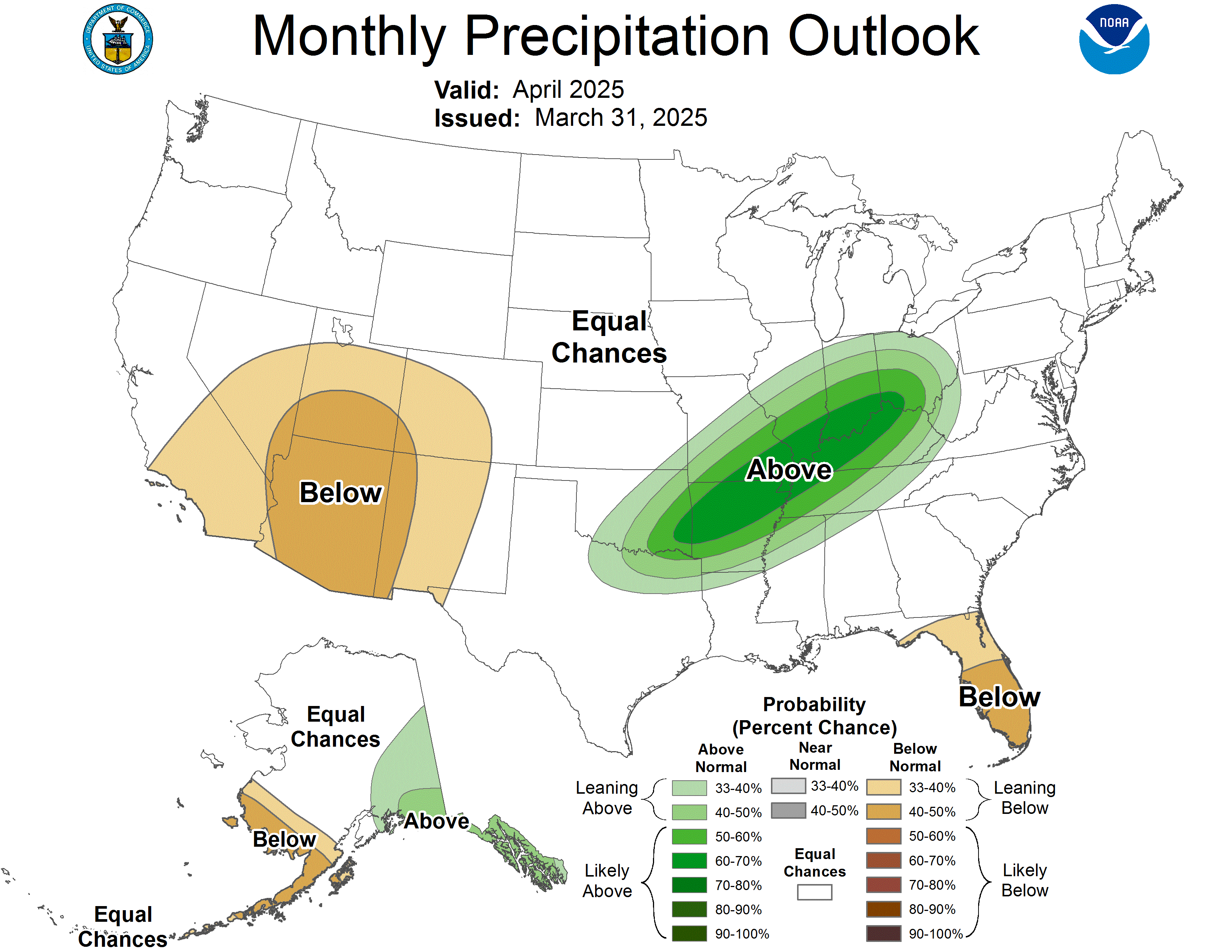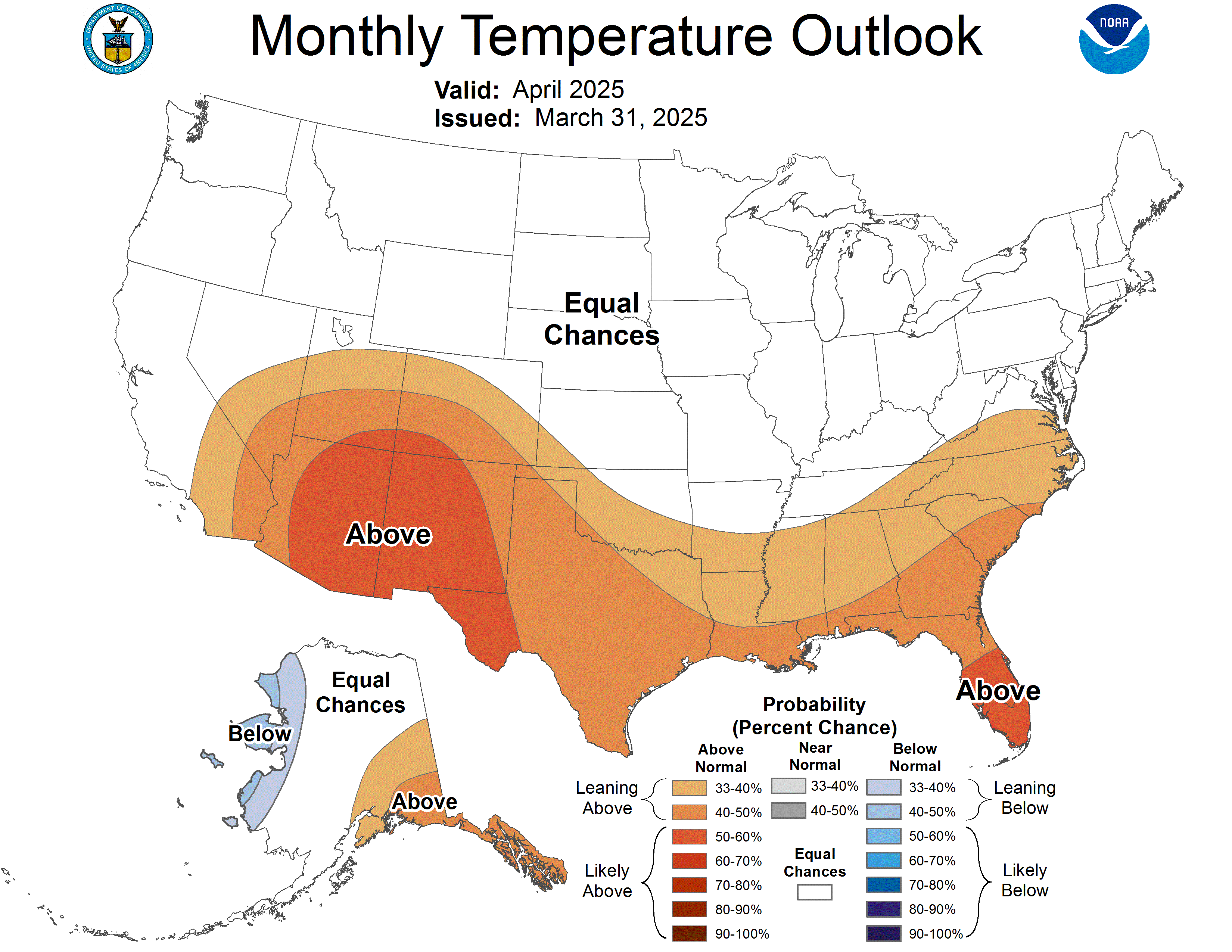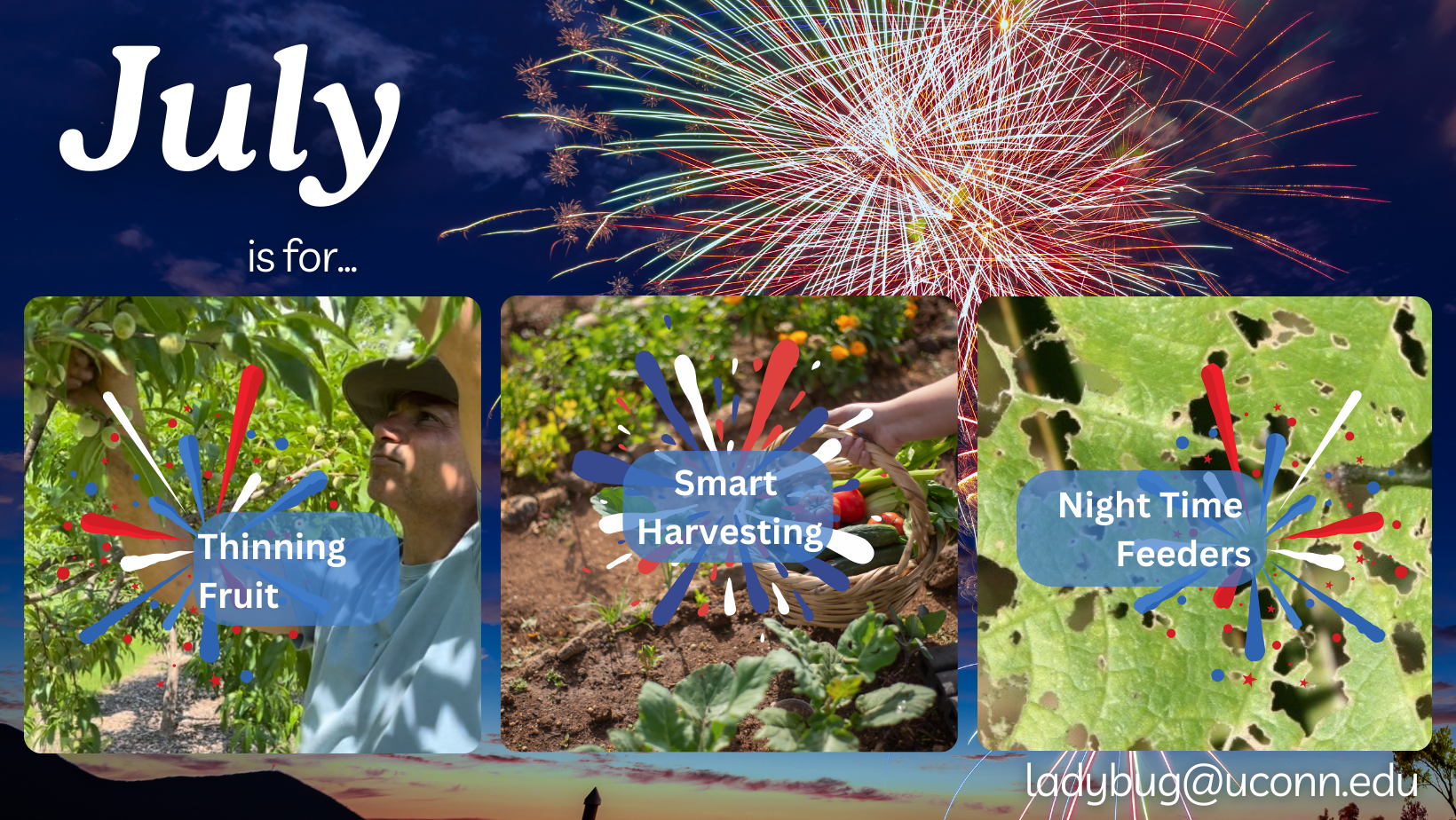
"A perfect summer day is when the sun is shining, the breeze is blowing, the birds are singing, and the lawn mower is broken."
- James Dent
Fruit Thinning
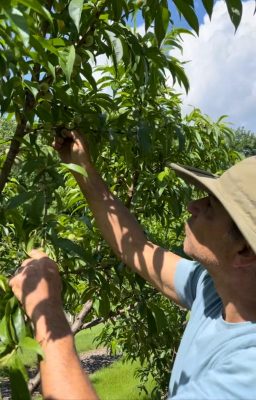
Most home gardeners who grow fruit trees know the importance of pruning for better air circulation, pest and disease control and for better quality of fruit. Thinning fruit early in the growing season is equally important for the same reason. In addition, it reduces a biannual fruit set. If fruits are left alone on the branches, the trees will use its carbs to produce all the fruit in one year exhausting its stores to produce fruit the next.
Smart Harvesting
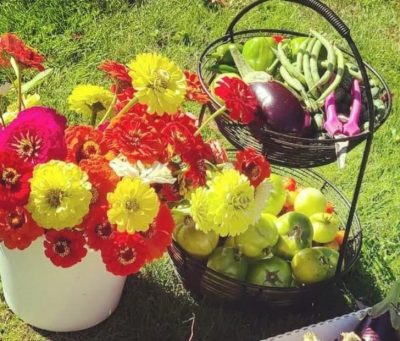
July is often the month when we start harvesting vegetables and cut flowers from our gardens! Use these tips to make sure you're getting the most out of your home production.
Tips for Harvesting Vegetables
- Harvesting early in the morning will help increase shelf life and may even improve taste.
- Never tug on your plants - use pruners or scissors to remove stubborn vegetables.
- Harvesting tomatoes before heavy rains can reduce chances of splitting.
- Know your vegetables and harvest at the right stage of development! Picking too early or leaving things too long can lead to reduced quality.
- When harvesting garlic, use a trowel or other garden tool to help you pop the bulbs out of the ground. This allows you to avoid damaging the stem while you're pulling.
More Tips for Harvesting Vegetables
Tips for Harvesting Cut Flowers
- Cut early in the morning when plants are well hydrated.
- Carry a bucket of fresh, clean, water to collect freshly cut flower stems.
- Know your plants - different species of flowers may need to be cut at different stages of development.
- Sanitize buckets and tools (knives, shears or purners) between uses.
- Make sure cutting tools are sharp so as not to crush vascular tissues when harvesting.
- Never store flowers in refrigerators that have food in them. Ethylene released by vegetables can speed up the bloom's decline.
Night Feeding Garden Pests
One of the most frustrating things for gardeners is walking through our beds and seeing damage that "wasn't there yesterday!" Many culprits feed at night or in the early evening when we're having dinner and settling down for the day. Learn more about them to help you catch the culprits red handed this summer!
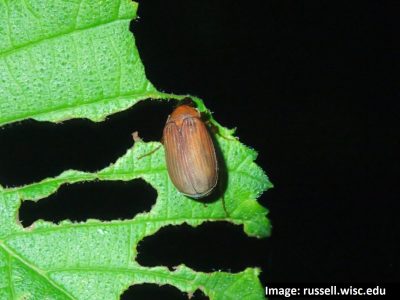
These non-native rusty brown scarab beetles feed on plant foliage and flowers at night. Scout with a flashlight to look for them. They can destroy basil plants overnight and may be hiding in mulch or just under the soil surface at the base of plants they are feeding on.
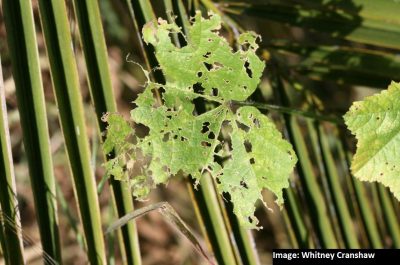
Earwigs feed on plants and flowers at night and hide during the day where it is dark especially in mulch or under plant containers where they are feeding. Foliage can be sprayed with an appropriate product, so they ingest it when feeding. Do not apply products to flowers.
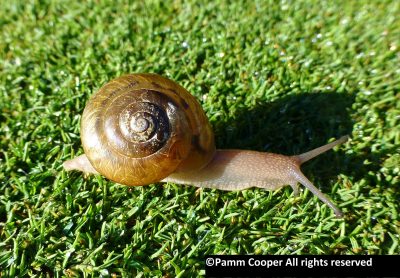
Slugs can leave shot hole like damage from chewing, and you will often also see trails left from where they have been. They are very active during wet/rainy weather.

If deer repellents were used earlier in the year repeat applications now as fawns will be browsing and they may not have been exposed to both desirable plants and effective repellents yet. Teach them when they are young to avoid plants their mothers preferred.
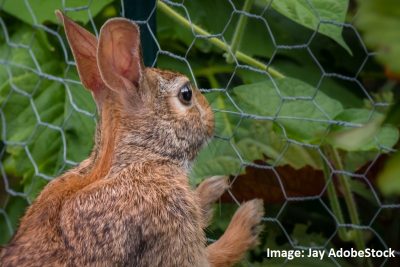
Rabbits can feed day or night, but normally are more active toward evening and nighttime. Favored plants can vary. Cage plants at night that they are eating, or simply throw bird netting over them at night.
Native Highlight: Coral Hairstreak Butterfly & Native Wood Lily
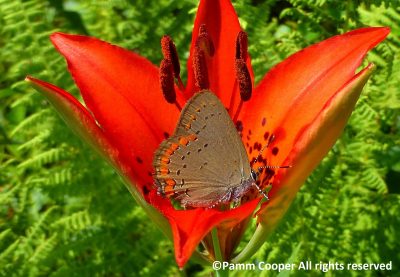
The coral hairstreak butterfly flight period coincides with the start of flowering of our native wood lily Lilium philadelphium. These small butterflies are often seen getting nectar on the flowers. Male butterflies also patrol their territory using the flowers as their base of operations. Wood lilies can be found in bloom around July 4th in Connecticut.
Vegetable Gardening Resources
During the growing season, UConn Extension publishes a regular pest alert. Additionally, the New England Vegetable Management Guide offers a lot of information about specific vegetable crops.
While the target audience for these publications is usually commercial growers, home gardeners can learn a lot from these materials including identification and management of common pests in your veggie gardens!
If you ever need confirmation on an ID or have additional questions about what you read in these reports, please do not hesitate to reach out to us at the Home & Garden Education Center! We're happy to help your gardens thrive.
UConn Fruit Update
The UConn Fruit Program publishes a fruit update, very similar to the IPM Vegetable Pest Alert. If you keep fruit trees, this may be a valuable resource for you! If you ever need help understanding how to apply these principles to your own home garden, let us know!
Knowledge to Grow On

Upcoming Events and Things to Do
- The 4th of July kicks off fireworks season! Find Displays near you!
- Blueberries & Raspberries are in season. Find a Pick your own farm near you!
- Blueberry Festivals! July 13 - Ellington, CT , July 20 - Lyman Orchards
- Wequetequock Festival, hosted by the Eastern CT Conservation District July 14th -Stonington CT
- Summer is a great time for music festivals and various summer concert series. See what's happening this summer or check with your town for events!
- Try a cruise tour like the Cross Sound Ferry Lighthouse Cruise, Thimble Island Cruises or the Essex Steam Train & River Boat
- July is when we often see many local events including local fireman carnivals, farmers markets, and town celebrations.
- Check out events offered along the CT Wine Trail
Educational Opportunities & Workshops
- Explore the Roger Tory Peterson Estuary Center Gardens, July 13th, Old Lyme, CT
- Summer Tree ID Workshop - July 13th, Hampton, CT
- Night of 1000 Fireflies, July 13th, New Canaan CT
- CT Rocks Geology Workshop - July 27th, Hampton, CT
Upcoming UConn Educational Events
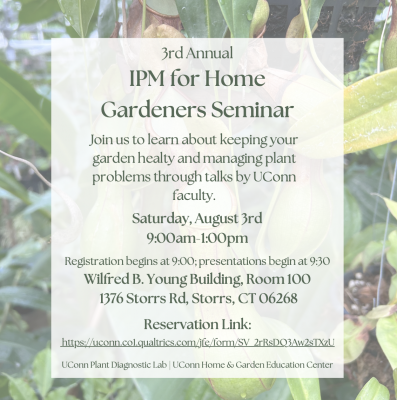
UConn IPM For Home Gardeners Seminar
Saturday, August 3, 2024
9:00 a.m. - 1:00 p.m
W.B. Young Building
Storrs, CT
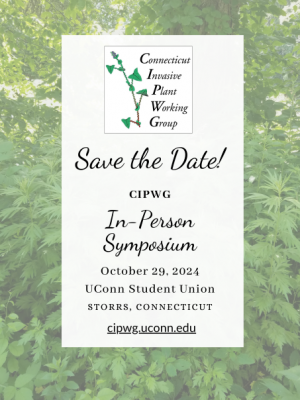
CT Invasive Plant Working Group
In-Person Symposium
October 29th, 2024
UConn Student Union
Storrs, CT
July Gardening Tips
- Many plants will shut down temporarily during times of high heat and drought. This can reduce flower/fruit/vegetable production. Check the soil for moisture to avoid overwatering.
- Do not mow during times of drought, this can damage your turf. Only mow when lawns are actively growing.
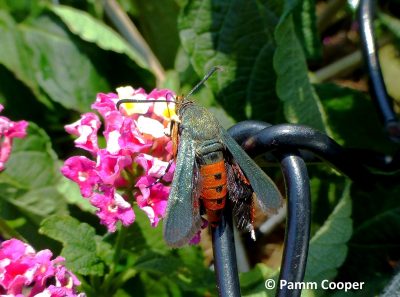 Closely monitor for Squash Vine Borer and Squash bugs on your cucurbits!
Closely monitor for Squash Vine Borer and Squash bugs on your cucurbits!
- Check hummingbird feeders for mold, ants and other problems every week. Cane sugar solutions may need more frequent attention. There are some products resistant to mold and nutrient breakdown - please check the label for frequency on these products.
- Many gardeners will be harvesting fall planted garlic in the month of July. Allow bulbs to cure for a minimum of 2 weeks.
- Cut back mums, tall asters, Montauk daisies and helianthus by about one-quarter for bushy, more floriferous plants.
- Pinching back herbs to stop flowering will keep the best flavor in the leaves and encourage branching. Herbs can be air dried, dried quickly in the microwave, or frozen.
- Check family members and pets for ticks after being outside, especially when in tall grass or wooded areas. If necessary send ticks to the Connecticut Veterinary Medical Diagnostic Laboratory for testing.
- Sunflower seeds can be sown before mid-June - mid August, depending upon days to maturity on the seed label which can vary from 60 to 110 days. If planted too late, plants will not have time to bloom before October
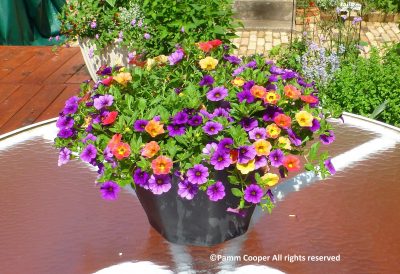
- Calibrachoa are stunning annuals that are excellent in hanging pots. They are heavy feeders and need moist soil, Watering can be done daily, but make sure not to saturate soils as these plants will succumb readily to root rot, especially in hot weather.
This Month’s Newsletter Contributors:
Pamm Cooper, Dr. Nick Goltz, Dawn Pettinelli, Marie Woodward, Heather Zidack
